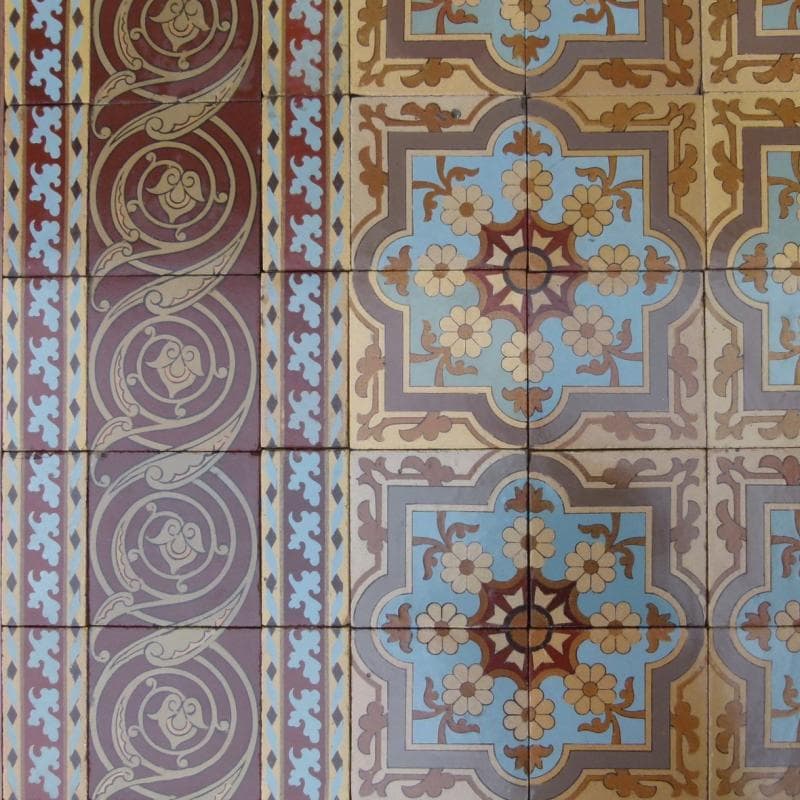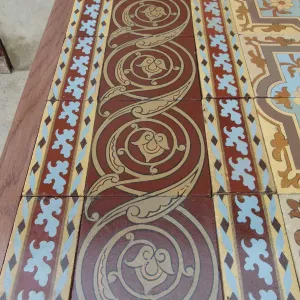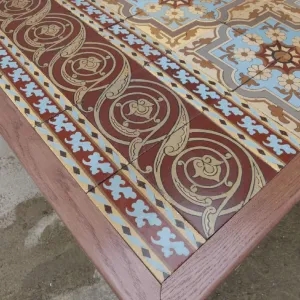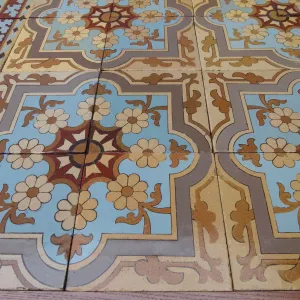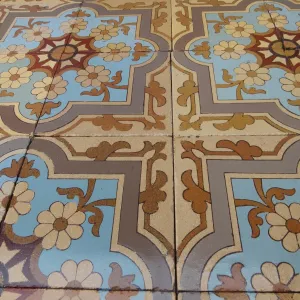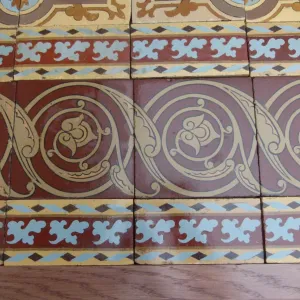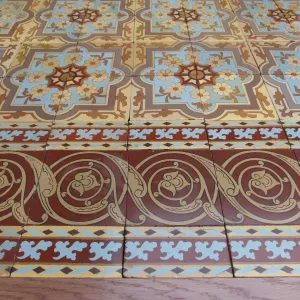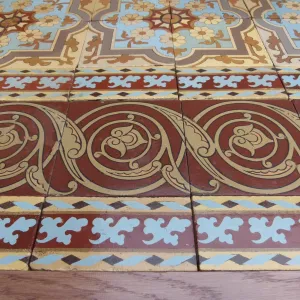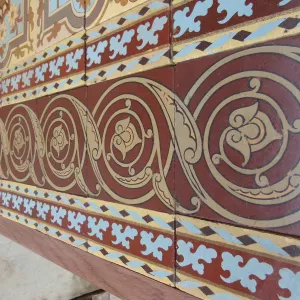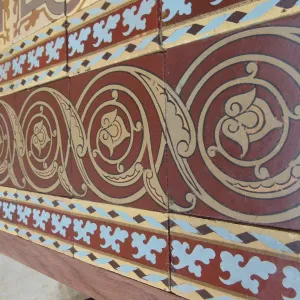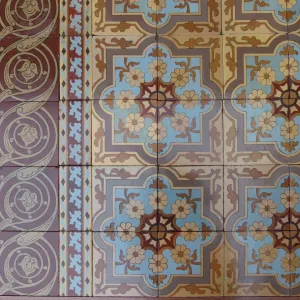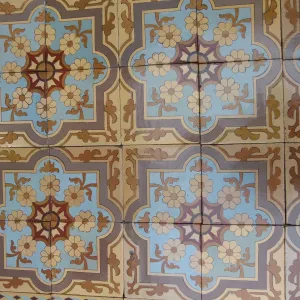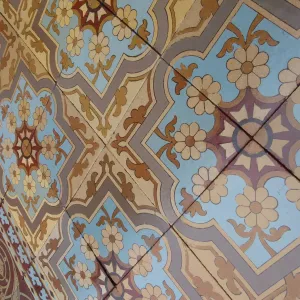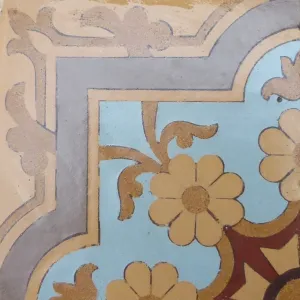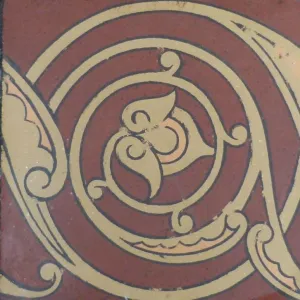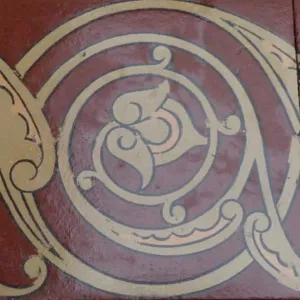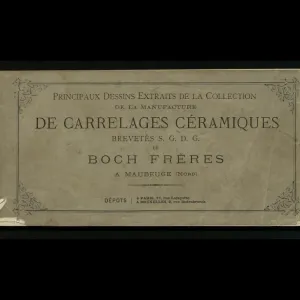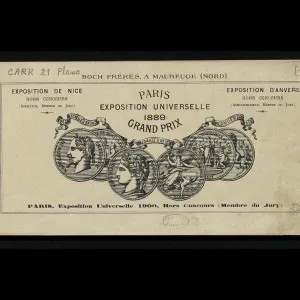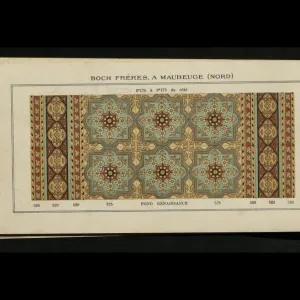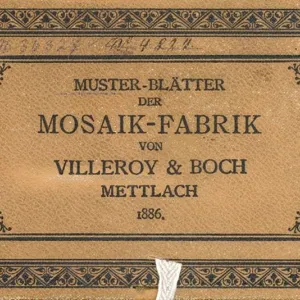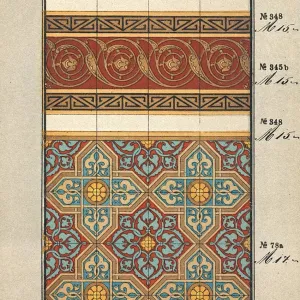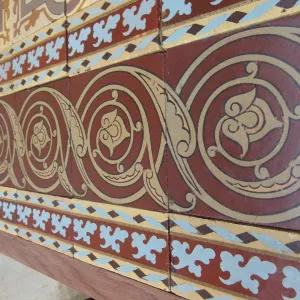Boch Frères & Villeroy & Boch Encaustic Tile Floor c. 1881-1900
This remarkable encaustic tile floor is not only a beautiful example of 19th-century European design—it is a truly rare survivor. A joint creation by sister companies Boch Frères of Maubeuge and Villeroy & Boch of Mettlach, this floor reflects a unique Franco-German collaboration between two of the era’s most distinguished ceramic producers. Few examples remain intact, making this set particularly valuable both for collectors and for architectural restoration.
What sets this floor apart is not simply its size—238 square feet of delicately patterned tiles—but its completeness and cohesion. The stylized vegetal themed French field tiles, delicate French half-borders, and graceful scrolling on the large German borders work so well together, and here they remain, preserved after over 125 years. All eight of the original small border corner tiles are also present, allowing for the classic triple border layout to be recreated precisely.
Each tile, measuring approximately 6.8 inches square and over half an inch thick, was handmade in single tile molds and fired at over 1,100°F. With each weighing over 50 ounces, these tiles are as durable as they are beautiful—resistant to frost, heat, and compatible with modern underfloor heating. After expert cleaning, they now reveal their original crsip palette as well as some tonal variation, typical of tiles made in small batches, and never exactly repeated.
The rarity of finding such a coordinated ensemble—unified in theme, form, and provenance—cannot be overstated. It is a piece of history and heritage awaiting to grace its new home.
Inventory Overview:
- Field Tiles: 568 tiles (approx. 181 sq ft)
- Large Border Tiles: 78 tiles - 44 linear ft
- Small Border Tiles: 196 tiles + 8 corner pieces - 56 linear ft when a double lay
- Total Surface Coverage: 238 square feet
Note:-
Our antique tiles were originally handmade in single or two tile molds. Pre-computer fabrication these molds were machined by hand & the colour slips to create the tile were mixed by measure and eye. When firing the tiles, the kiln temperatures of c.1,100F degrees could also be variable. The result of this production process is that tiles made during this period of non-automation often display subtle size & thickness variations and there can be tonal variations in colors, all of which add to their charm and uniqueness. When photographing a floor, we always take a random section so that it is representative of the whole in tones and patina.
A rigorous quality control during the restoration process will include in the sale any tiles with groutable small chips and edge nibbles, expected of tiles more than 100 years old, but include for free any with larger defaults as rejects, which the tiler can then use for offcuts.
Can we help?
If you can provide a technical drawing, or a simple sketch with key dimensions, we are happy to assist in evaluating and recommending the best layout of the floor in your area of choice. Click here for more details
